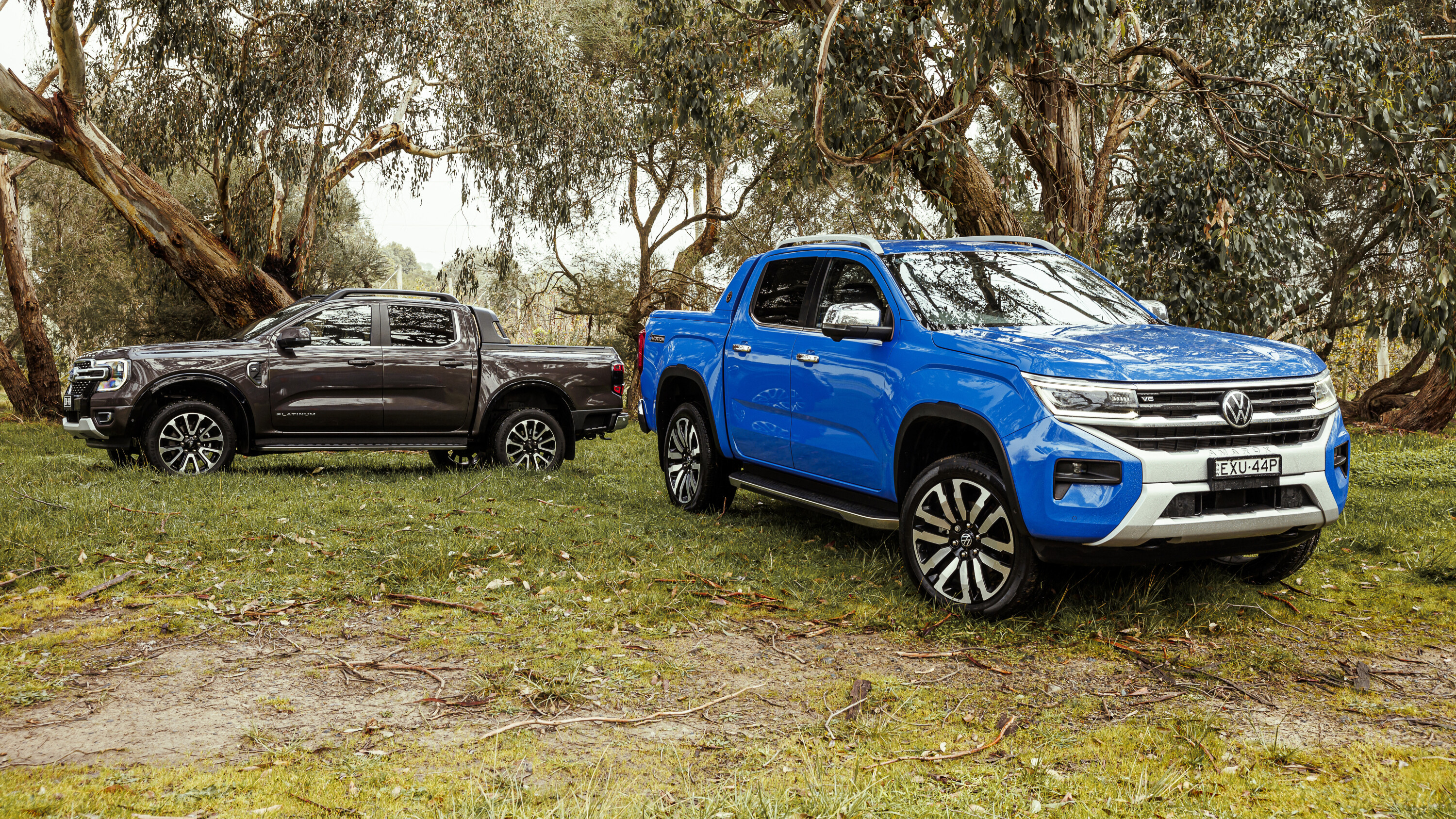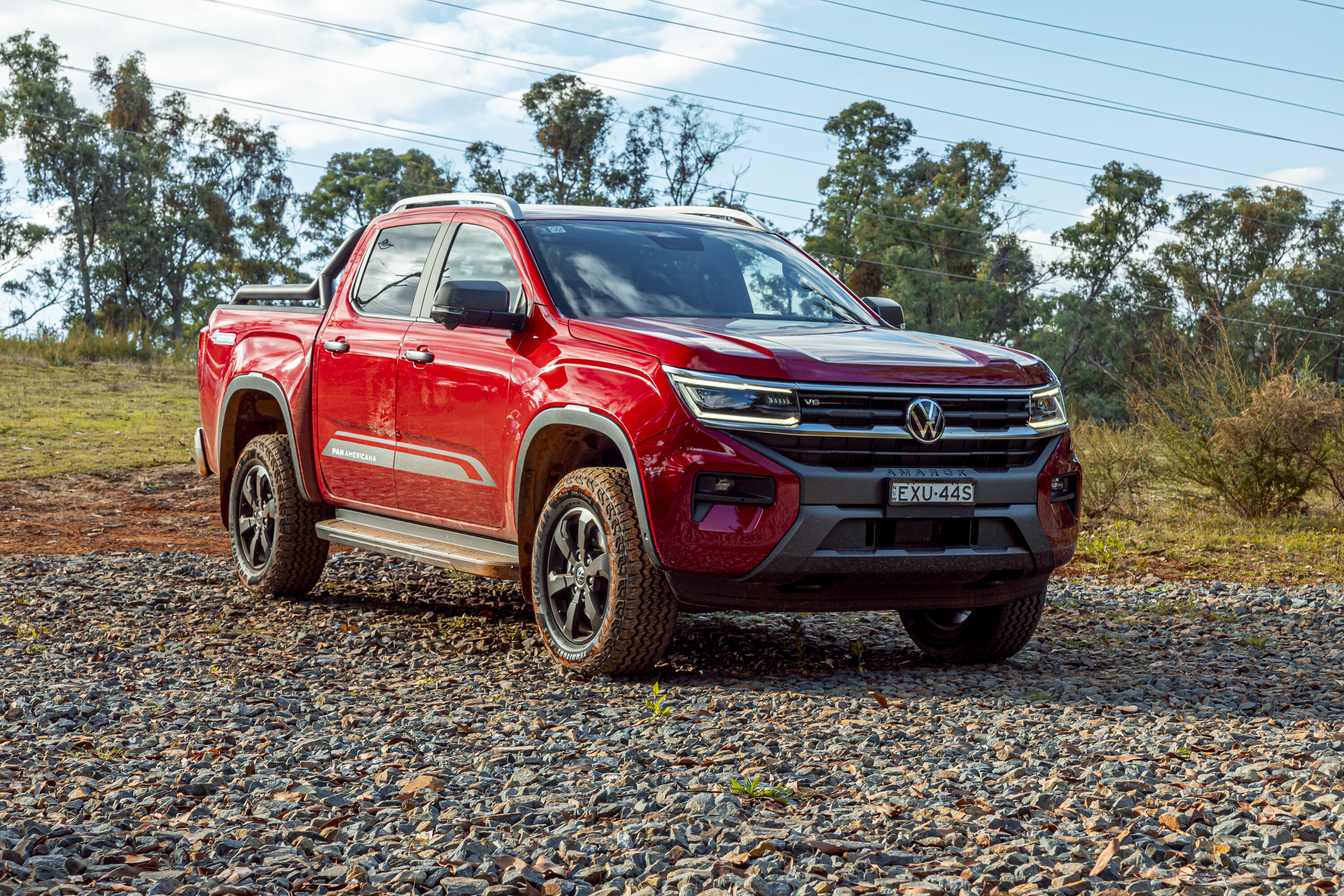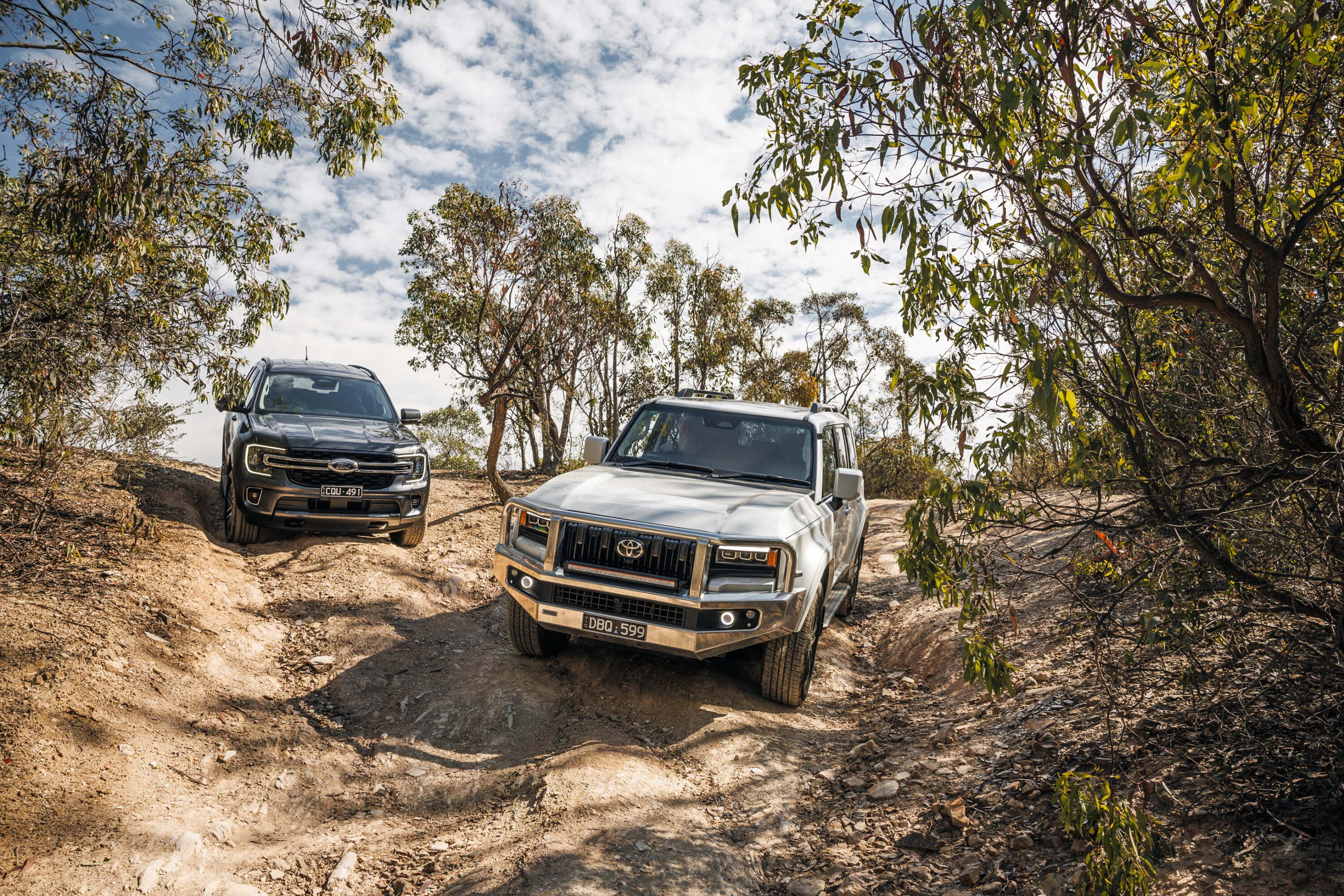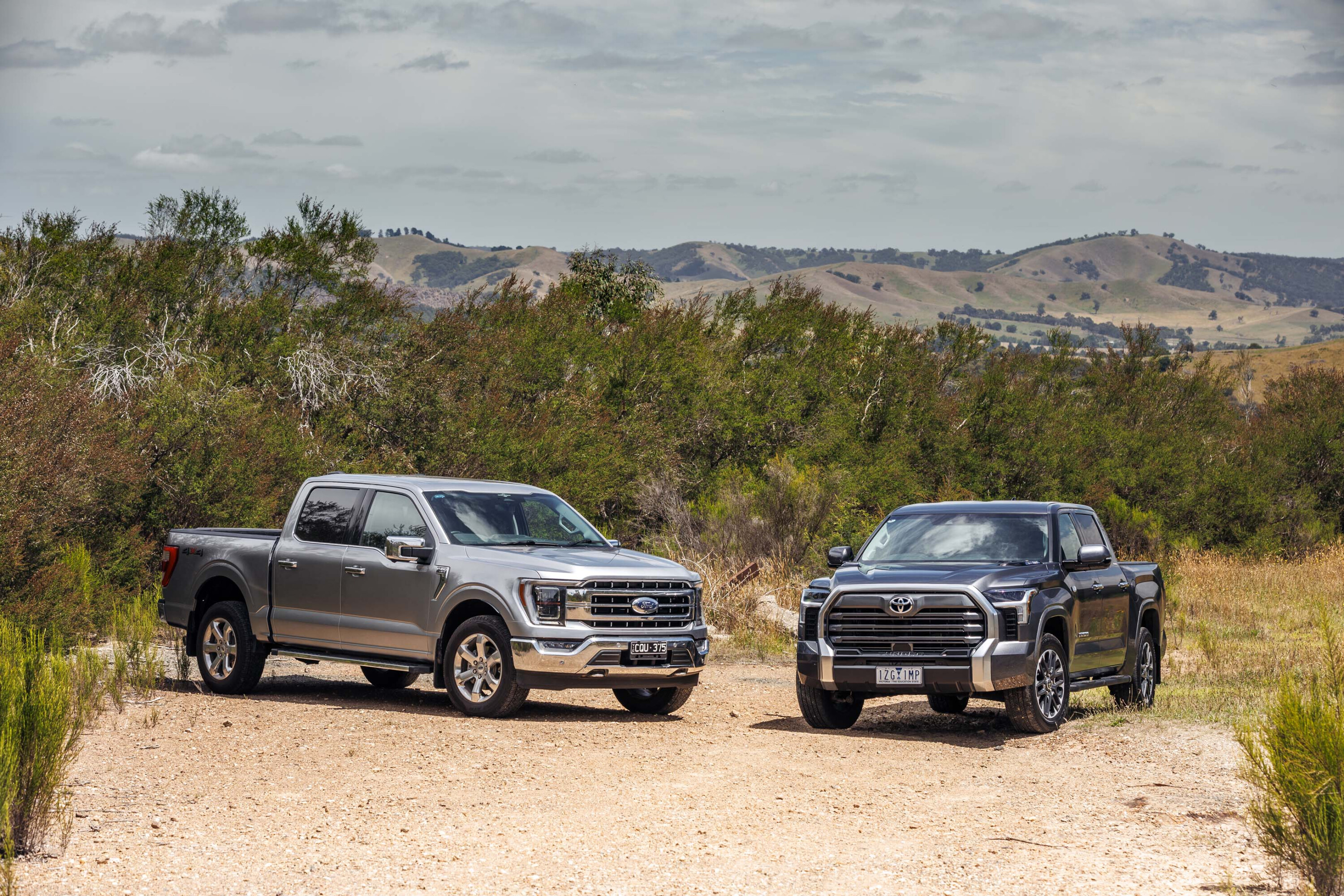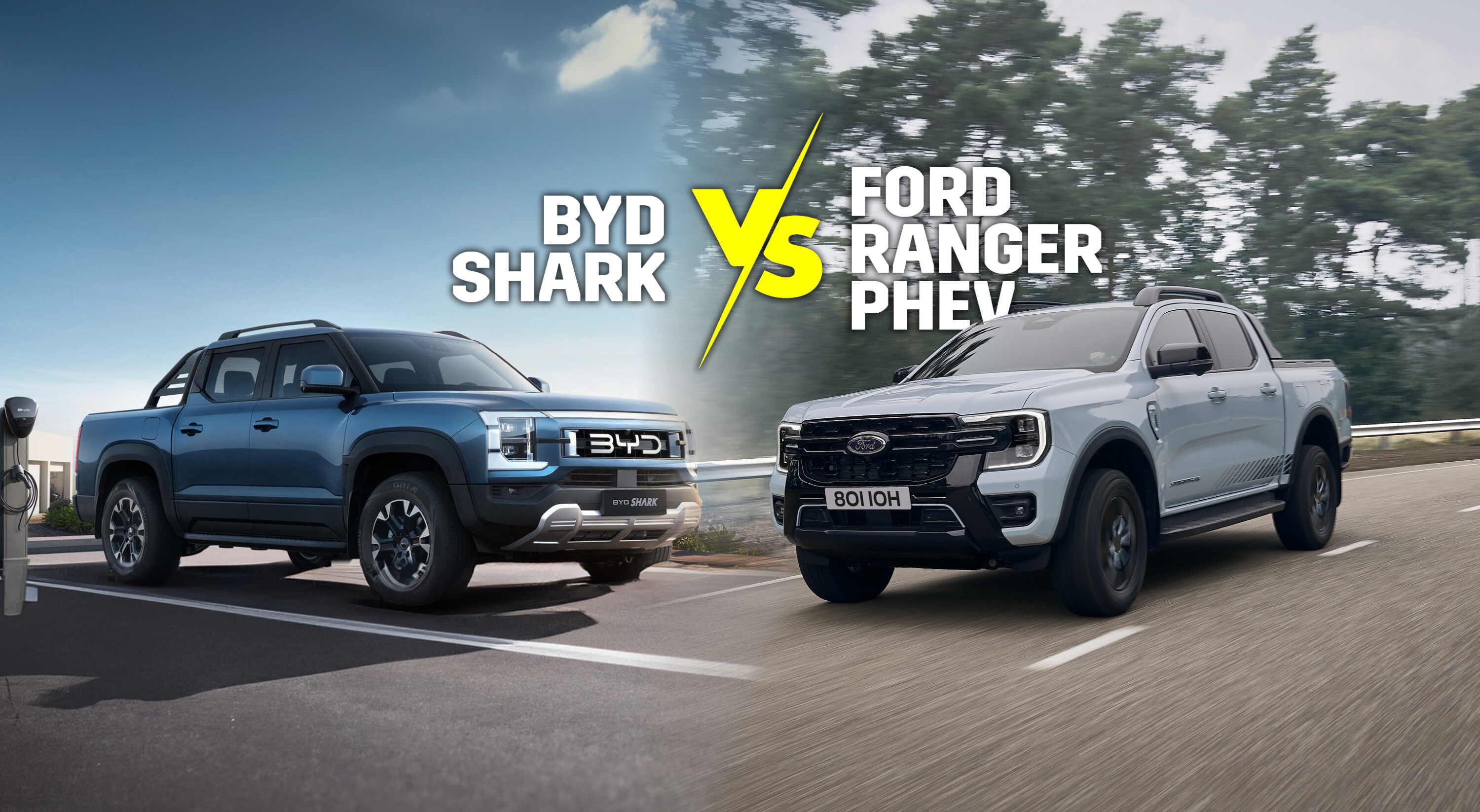I’m looking at the Ford Ranger Platinum and wondering whether there’s a better-value vehicle trim for sale in Australia.
Not in terms of the overall package, but more in terms of what additional gear you get when you step up to that model. The 3.0-litre V6 Platinum throws in a lot, more of which later. So much, in fact, that you start to question whether it’s cost-effective for Ford to sell this model versus the next Ranger down in the pecking order, the Wildtrak.
As Ford has discovered by its healthy order bank for the $85K Raptor variant, dual-cabs with hefty price tags tap into a bigger and more receptive market than most of its rivals had ever considered. Most but not all.
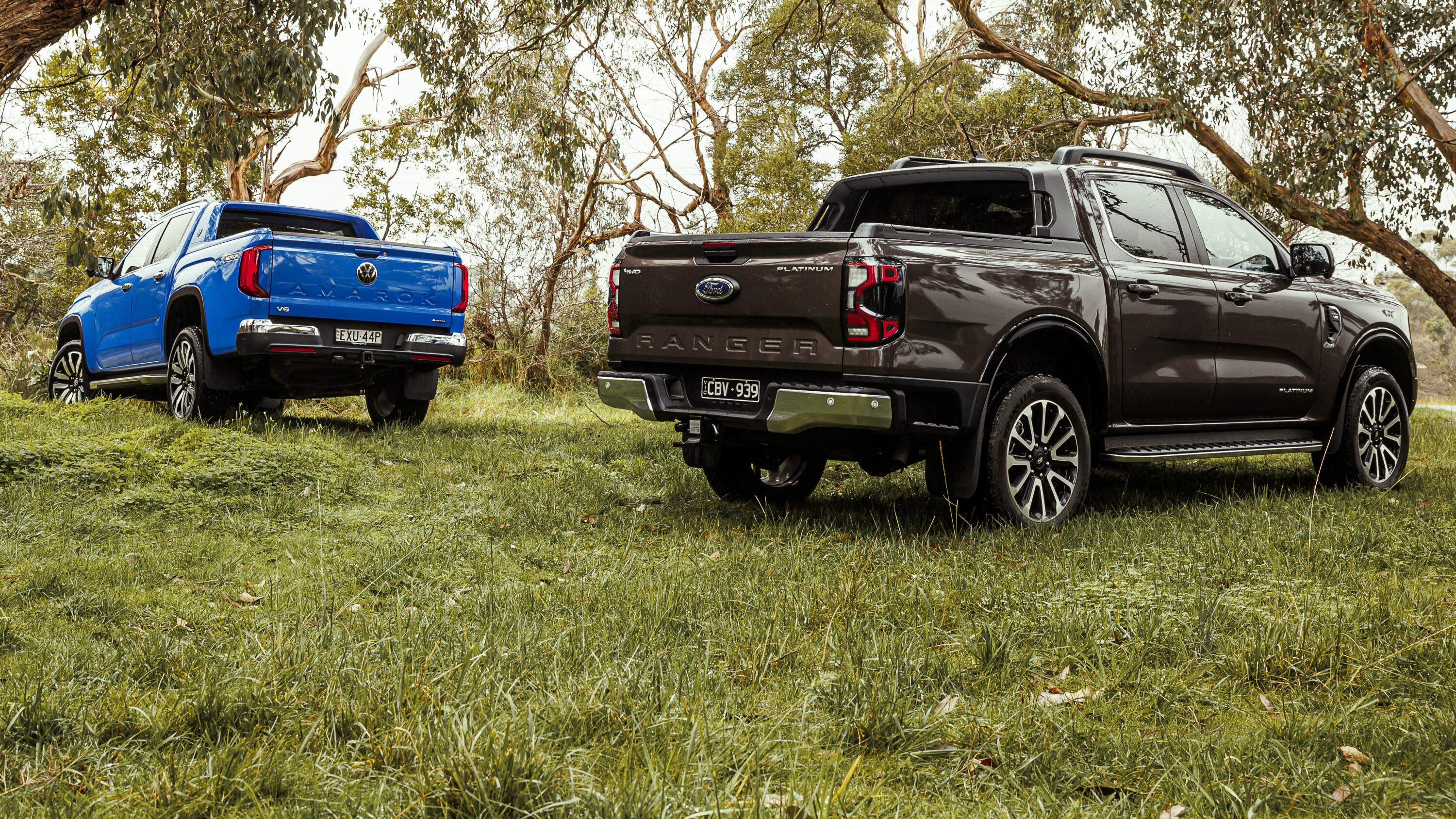
You see, the Volkswagen Amarok is built on the bones of the Ford Ranger and is all the better for it.
So it gets all of the good stuff regarding chassis and engines and then garnishes it with the sort of feel-good polish we’ve come to expect from Volkswagen. Perhaps ‘garnishes’ is doing the Amarok a disservice, as it’s more than just a superficial once-over.
The diesel flagship version is the Aventura TDI 600, so it made perfect sense to line it up against the newcomer from Ford. Last time we put the new Amarok up against the new Ranger, VW’s off-road-specific PanAmericana version got the nod by the merest whiff over the Ranger Sport. This time around, Ford’s out to level the score.

JUMP AHEAD
Price and equipment
$6800. That’s what it costs to step up from a Ford Ranger Wildtrak to a Ford Ranger Platinum.
Were this Porsche, you might get coloured crests on your wheel centres and some carbon-fibre mirror caps for that much, but thankfully the folks at Ford are a good deal more generous.
Over and above the $70,190 Wildtrak, the $76,990 Platinum (both before on-road costs) deals you in with three big-ticket items straight off the bat: matrix LED adaptable headlights, the full-frame 12.4-inch touchscreen and a 10-speaker Bang and Olufsen premium sound system. For many buyers that would be a fair deal.
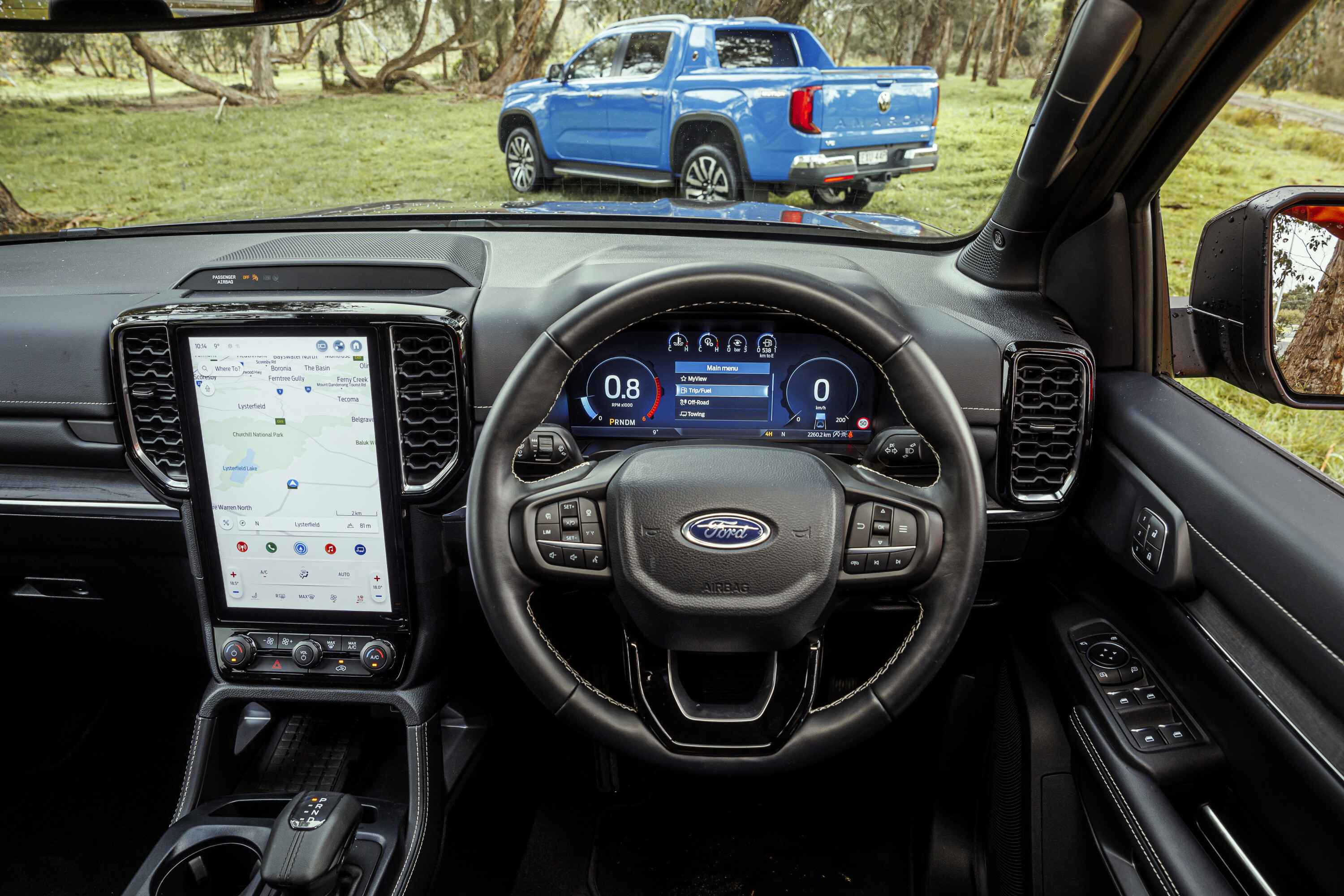
But no. Like a shopping channel advertisement for shoddy chef’s knives, there’s more.
Ford delivers a set of 20-inch alloy wheels, ‘Platinum’ badging, satin chrome exterior trim, a damped tailgate and a clever rail-mounted flexible rack system.
Indoors, Platinum owners will find quilted leather seats which are heated and ventilated up front, a heated steering wheel, and 10-way power adjustment for the front pair of chairs as well as a driver’s seat memory function. The Black Maple dash inserts look good too.
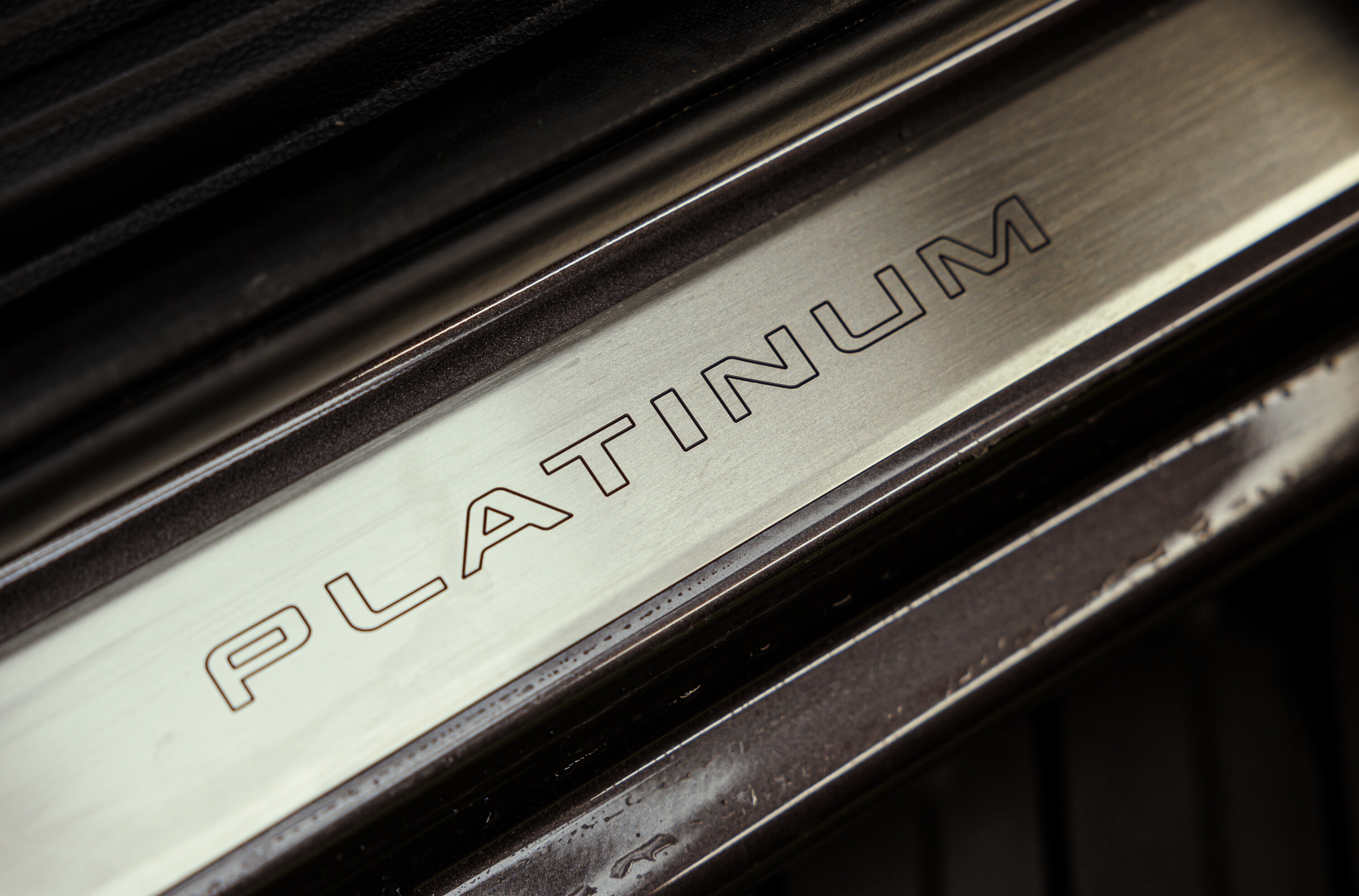
The premium pack that is popular with Wildtrak buyers has also been thrown in for nix with the Platinum, bringing you that B&O audio as well as a set of full LED tail lights and an overhead auxiliary switch bank.
If you don’t fancy drilling holes in your $76K truck to fit switchgear for functions like driving lights, winches and so on, this is especially neat.
You’ll also find some welcome refinements that are common to more proletarian models in the Ranger line-up such as wireless charging for your phone and wireless connection to both Android Auto and Apple CarPlay. Active Park Assist and 360-degree cameras are also fitted as part of a comprehensive safety suite.
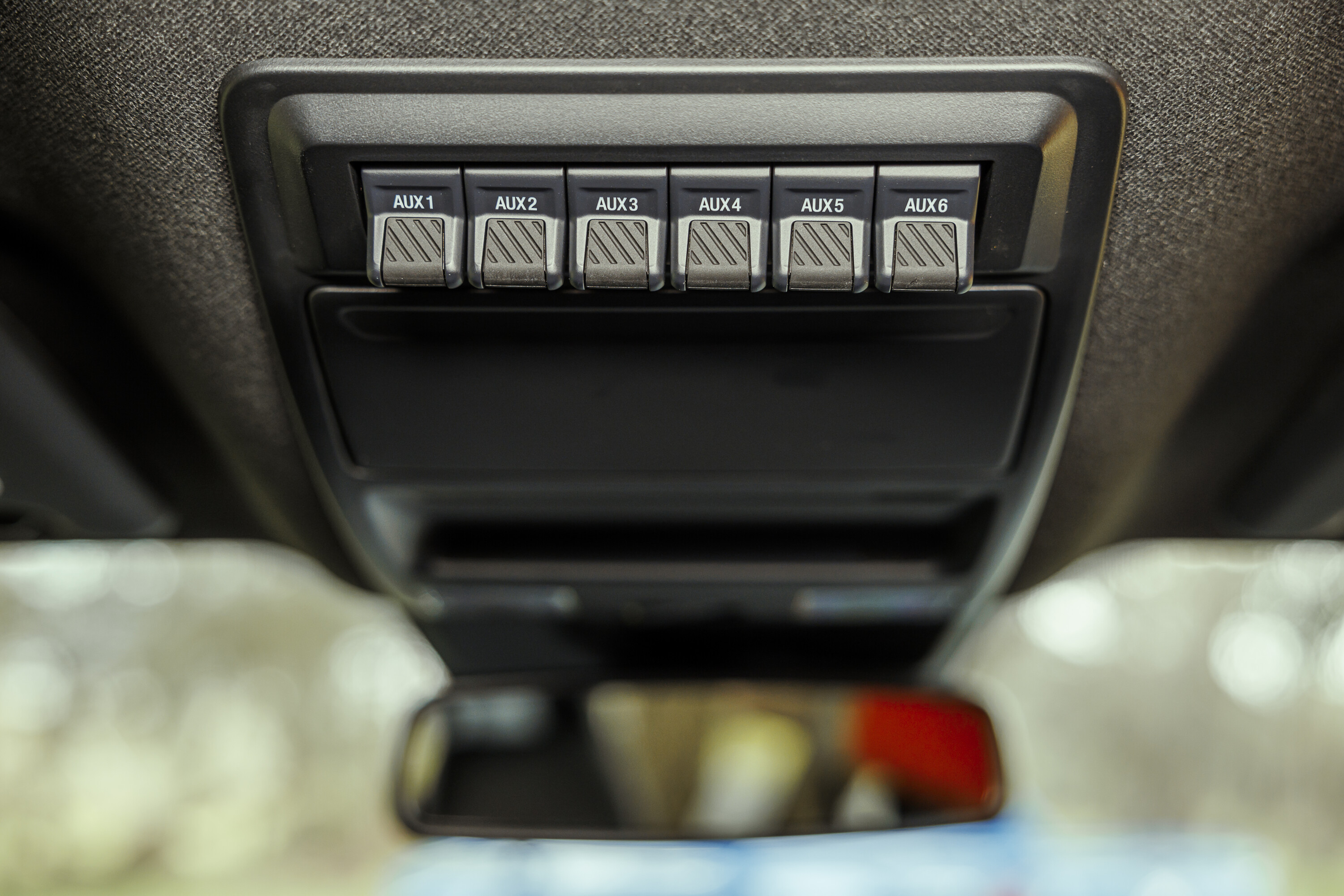
Unfortunately, the only colour you can choose that doesn’t attract an option charge is Arctic White, which feels a bit mean on a flagship vehicle.
Meteor Grey, Aluminium, Sedona Orange, Shadow Black or the smart Equinox Bronze of the car pictured here will all run you $700.
The Amarok Aventura doesn’t feel as instantly luxe as the Ranger. In fact, it feels a little austere, but the sticker price of $79,990 before on-road costs is anything but spare. Take a closer look at the vehicle and you begin to appreciate that there’s a lot packed in here, but not everything is obvious.
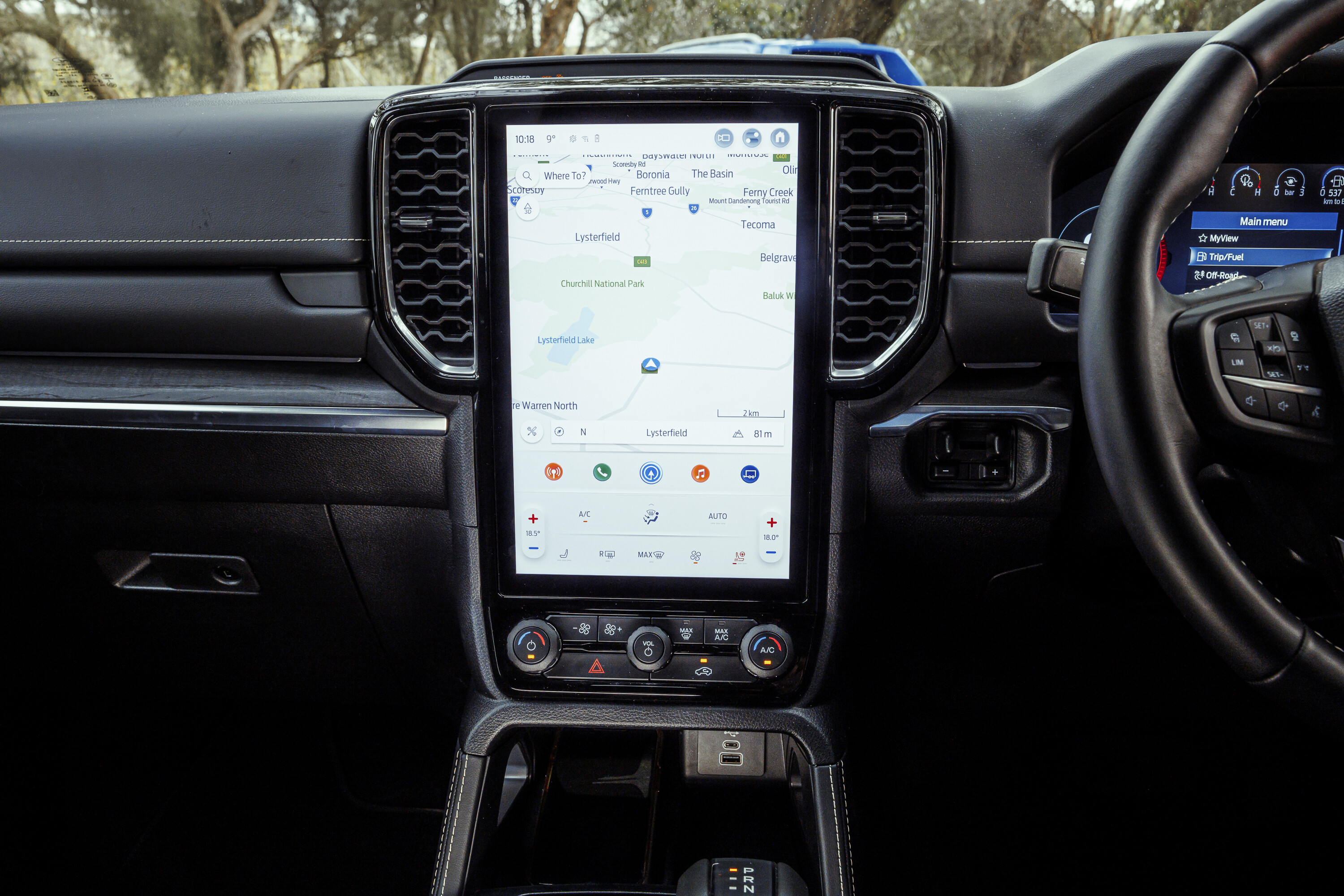
The chromed X-design front end offers more of an extrovert approach than the black plastic of the PanAmericana version
The suspension is uprated to the more expensive Dynamic Suspension pack, the alloy wheels are 21-inch items, and it features an elegant ‘sailplane’ behind the cab with a standard electric roll cover for the tub.
Its chromed X-design front end offers more of an extrovert approach than the black plastic of the PanAmericana version, although, like that model, the aesthetic is slightly tarnished with some astonishingly cheap-looking chromed ‘4MOTION’ stickers on the flanks.
Like the Ranger, white’s the only no-cost paint finish. All of the metallic finishes (Bright Beige, Bright Blue, Dark Grey, Deep Red, Light Grey, Midnight Black and this rather lovely Mid Blue) all attract a $990 option impost.
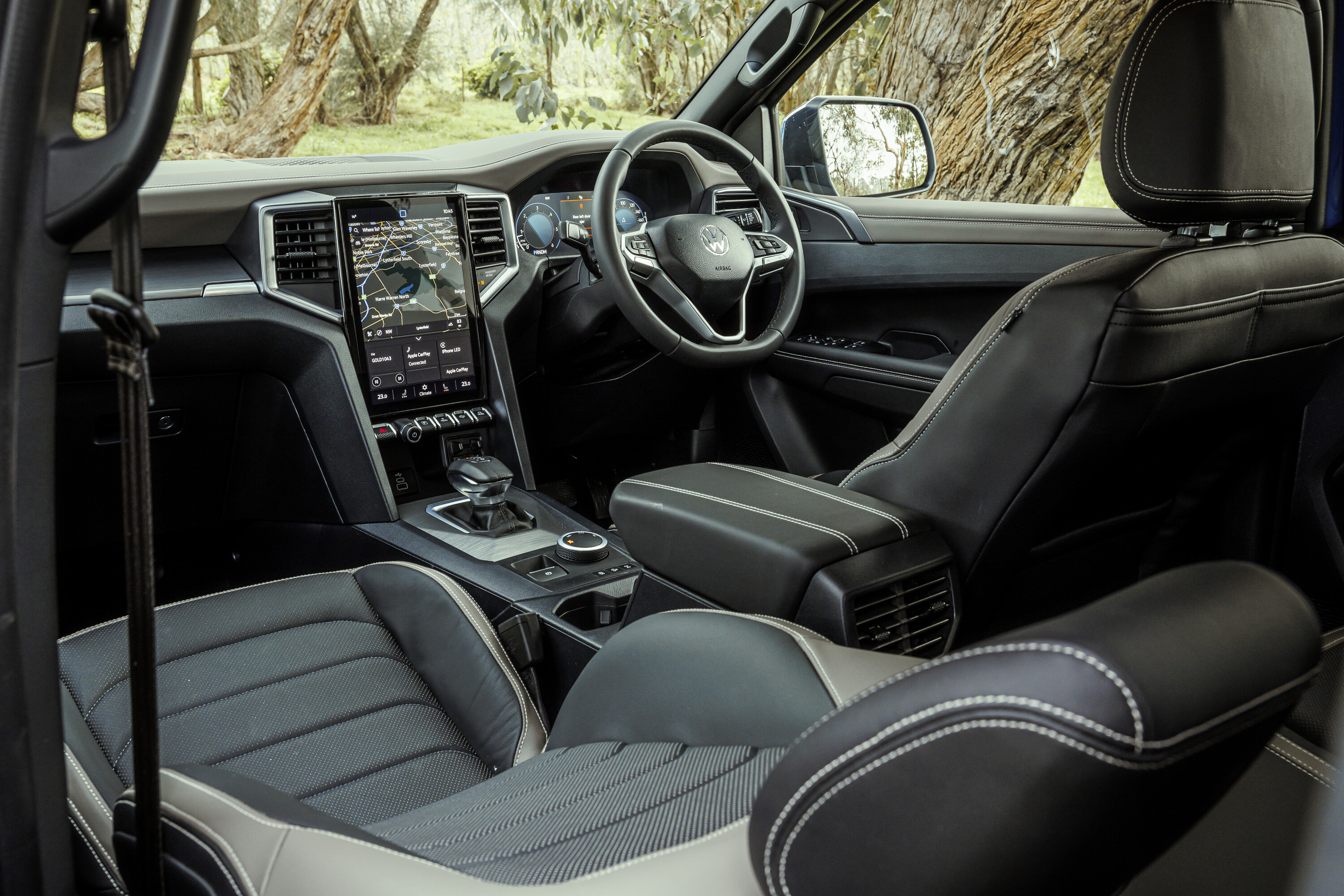
There’s a lot to like about the slightly low-key cabin. The 1920×720 pixel landscape-oriented Digital Cockpit Pro screen in the dash binnacle is slick and can run a full-width map if required.
On the seats, Savona stitched leather feels good and the stitched leather look continues across the dash roll top, which one-ups the Ford. The centre console is wider than the Ford’s which lends the Amarok’s cabin a real feeling of solidity.
Like the Ranger, this version of the Amarok gets matrix LED headlights, although the Harman Kardon stereo means you’ll have to make do with a mere eight speakers to the Ford’s ten. First-world problems, we hear you.
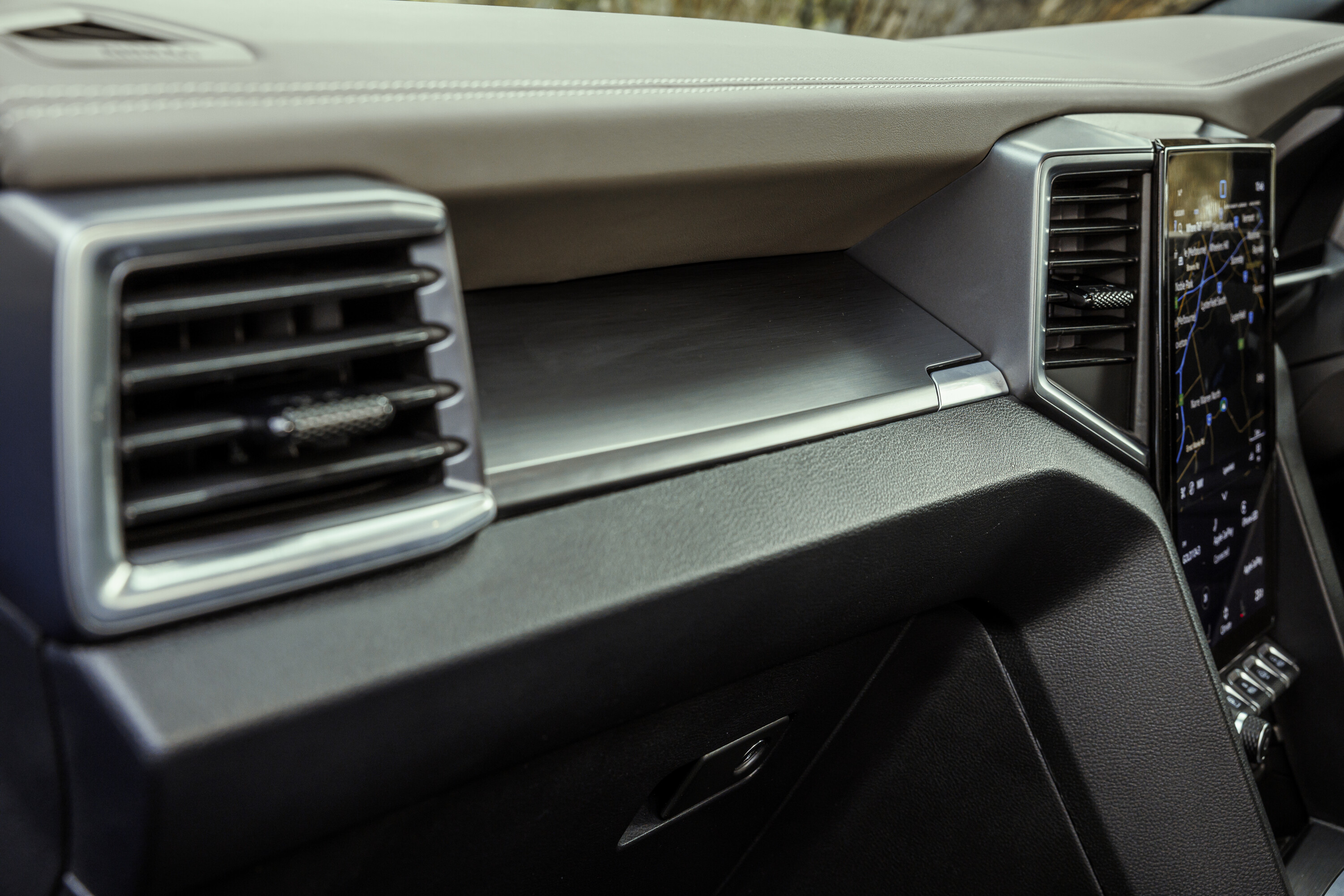
Comfort and space
If there is one downside to the Volkswagen’s industrial-strength centre console, it’s that the driver’s footwell can feel a little bit tight.
As a result, the Ford’s driving seat feels a good deal more spacious, measuring a full seven centimetres wider from centre console to door than the Volkswagen.
Both utes offer solid-feeling side steps that help you up and into the cabin, albeit at the expense of a little off-road practicality. That’s not really too much of an issue, because if you’re intent on going rock-crawling, you probably wouldn’t spring for either of these flagship models.
The hefty physical heating, ventilation and air conditioning controls of the Ranger are easier to manipulate on the move and more intuitive in their functionality than the HVAC controls of the Amarok, which are chiefly within the touchscreen system.
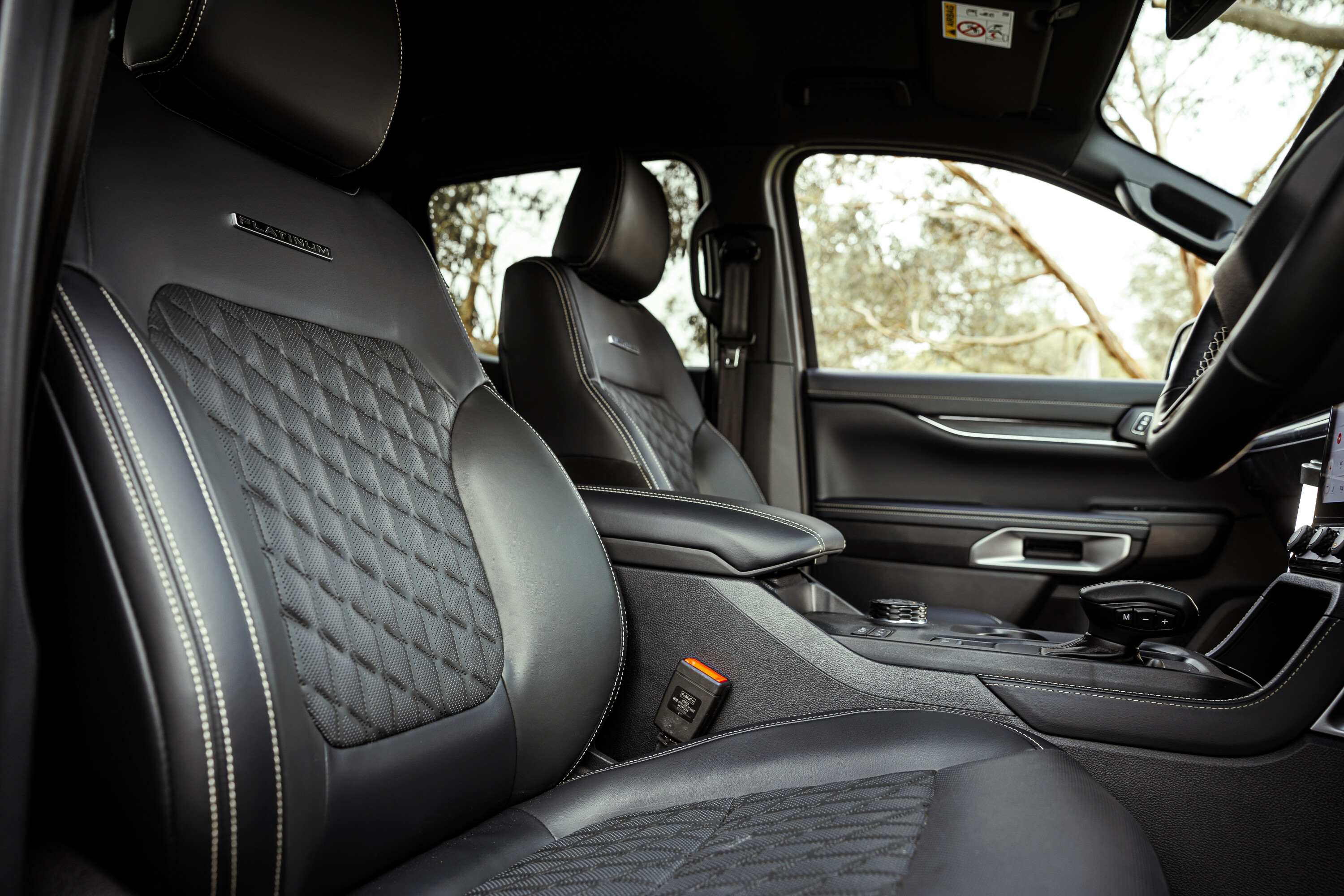
That said, the Amarok’s on-screen seat heater controls are far easier to use than Ford’s infernal slider.
At first glance, it seems that the same goes for drive modes. In the Volkswagen, they’re incorporated into the central screen, whereas the Ranger utilises a rotary dial on the centre console. In practice, the Amarok is probably a slicker implementation.
Hit a physical drive mode button and then select the on-screen mode and you’ve switched mode in the Volkswagen. Yes, it’s a two-step affair, but it takes a second. By contrast, the Ford forces you to cycle through each mode in turn and there are six of them. This can take a surprisingly long time, with your eyes diverted to the mode indicator to check where you’ve ended up.
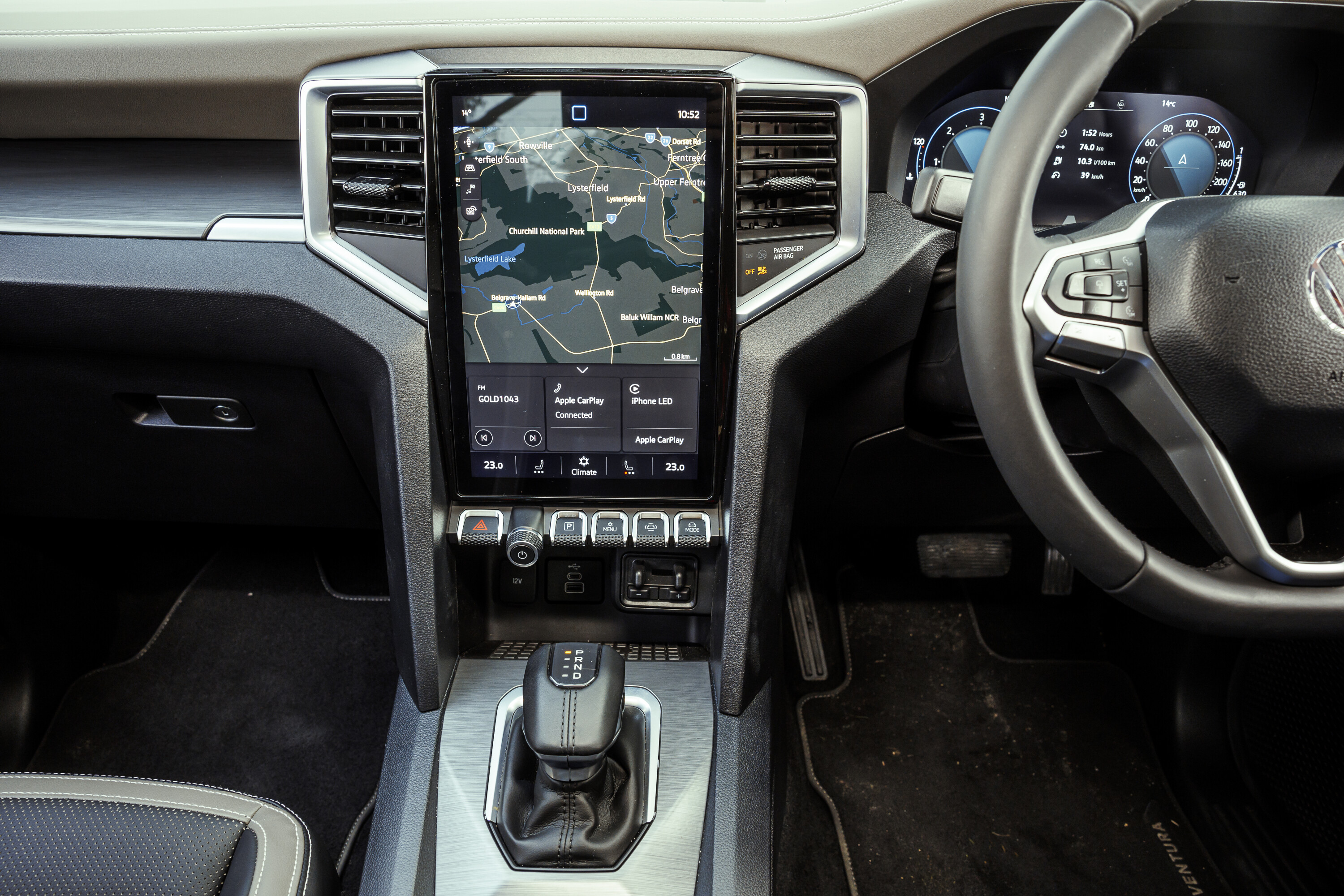
Both run a version of Ford’s Sync4 software, though Volkswagen’s iteration is heavily reskinned.
It’s a very good system but it can be prone to dropping the wireless phone mirroring connection on occasion and then being unable to reacquire it without a hard reboot. The Ranger gets the big screen to match the Amarok, although it has to be said that the slightly smaller screen in lesser Rangers is far from a punishment and is nicely integrated.
Access to the rear seats in both vehicles is reasonably good, although the Amarok’s wider side steps mean that if you’re leaning into the vehicle from ground level, it’s possible to shin yourself pretty painfully on them. That’ll likely only happen once before you wise up.
Both vehicles have rear vents but there’s no USB connection in the back of the Amarok. There are bottle holders in the door pockets, two cup holders in the centre armrest and ISOFIX child seat fixings in the two outer positions though.
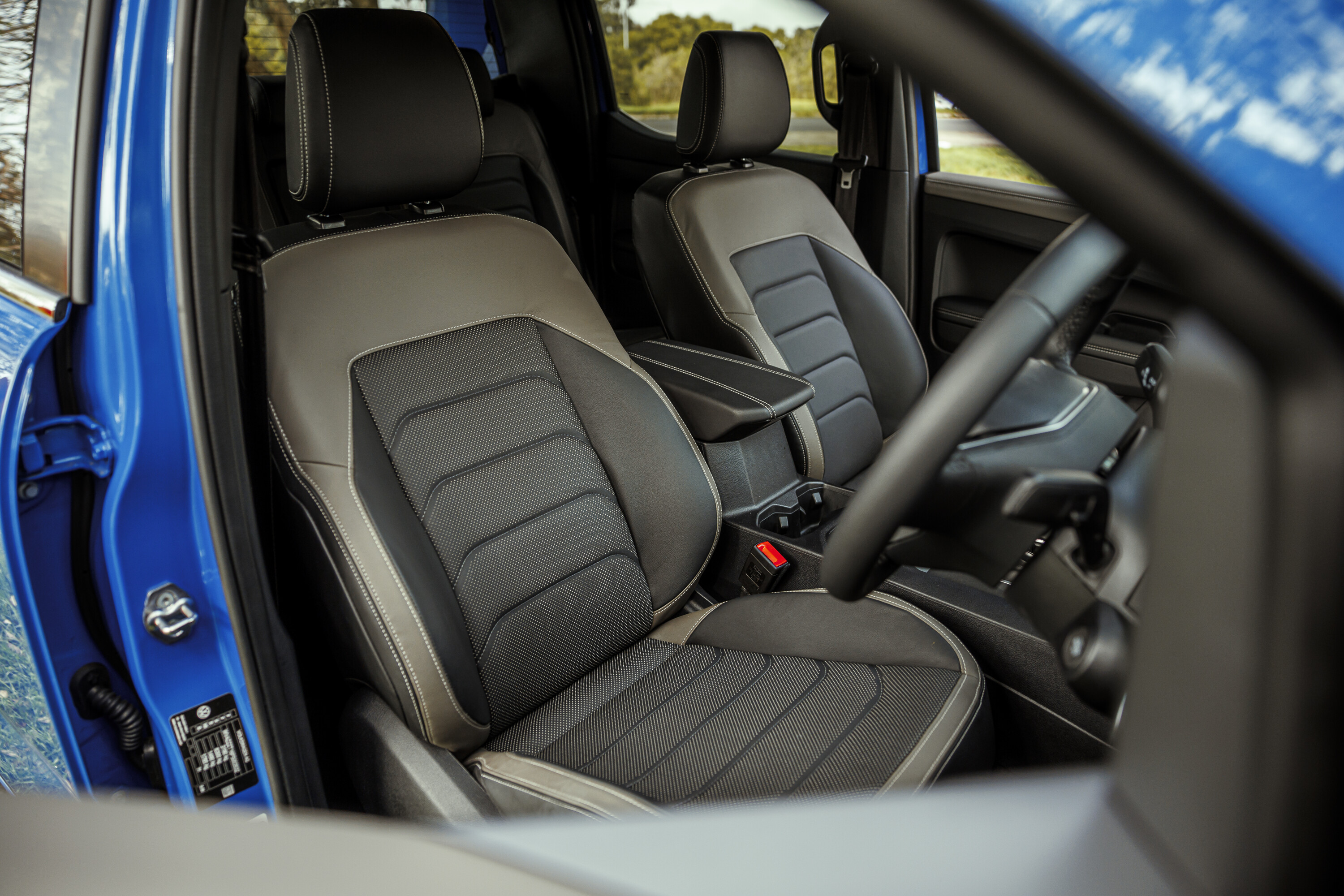
Both vehicles’ trays feature lined load bays and are scaled to fit a Euro pallet, with a 1217mm width between the wheelhouses on the Ranger and 1224mm on the Amarok.
The Amarok features a ruler on its tailgate as well as six tie-downs and LED lighting but, curiously, no 12-volt connection. Both vehicles feature a lockable electric roller shutter as standard, handy for keeping gear away from prying eyes.
Steps notched into the sides of the Ranger’s wraparound bumpers are a piece of intellectual property that Dearborn was clearly not willing to cede to Wolfsburg, and they make jumping into the back of the tray very easy.
Ford’s ingenious automated trailer light sequence check is another neat piece of thinking that the company has preserved as a point of difference.
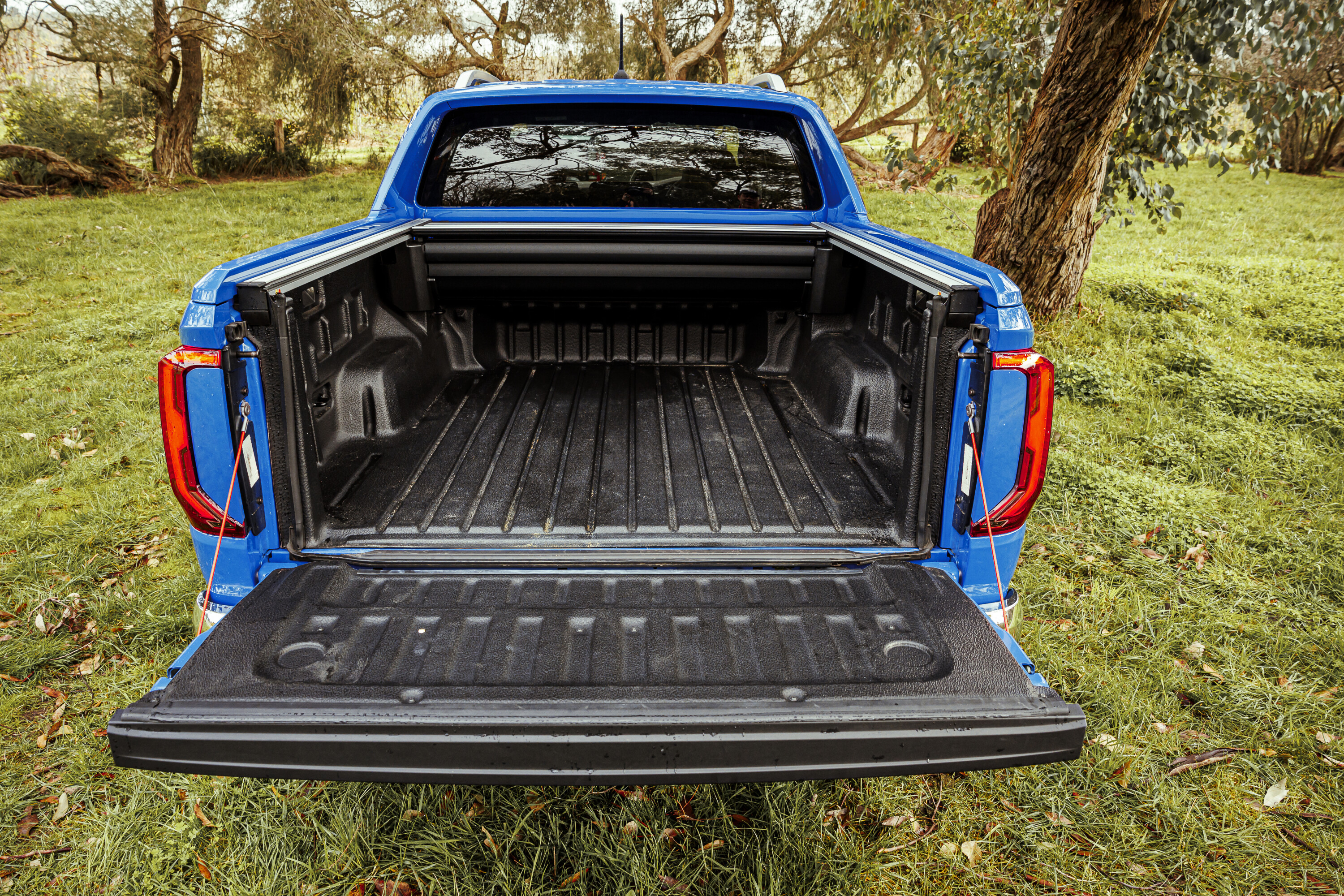
On the road
Cast your mind back to our previous comparison between the Ranger Sport and the Amarok PanAmericana.
In that test, both cars were sitting on relatively boofy 18-inch alloys with all-terrain tyres but the Volkswagen’s Dynamic Suspension setup meant it rode a bit more firmly than the Ford. That’s fine for blacktop, but made it a bit more of a handful in the rough.
The tables are turned when both vehicles are on bigger wheels and lower profile tyres. There’s no doubt that the Amarok Aventura is a plusher-riding vehicle than the Ford Ranger Platinum. It’s all the more impressive given that the Amarok rides on 21-inch alloys compared to the Ranger’s 20s.
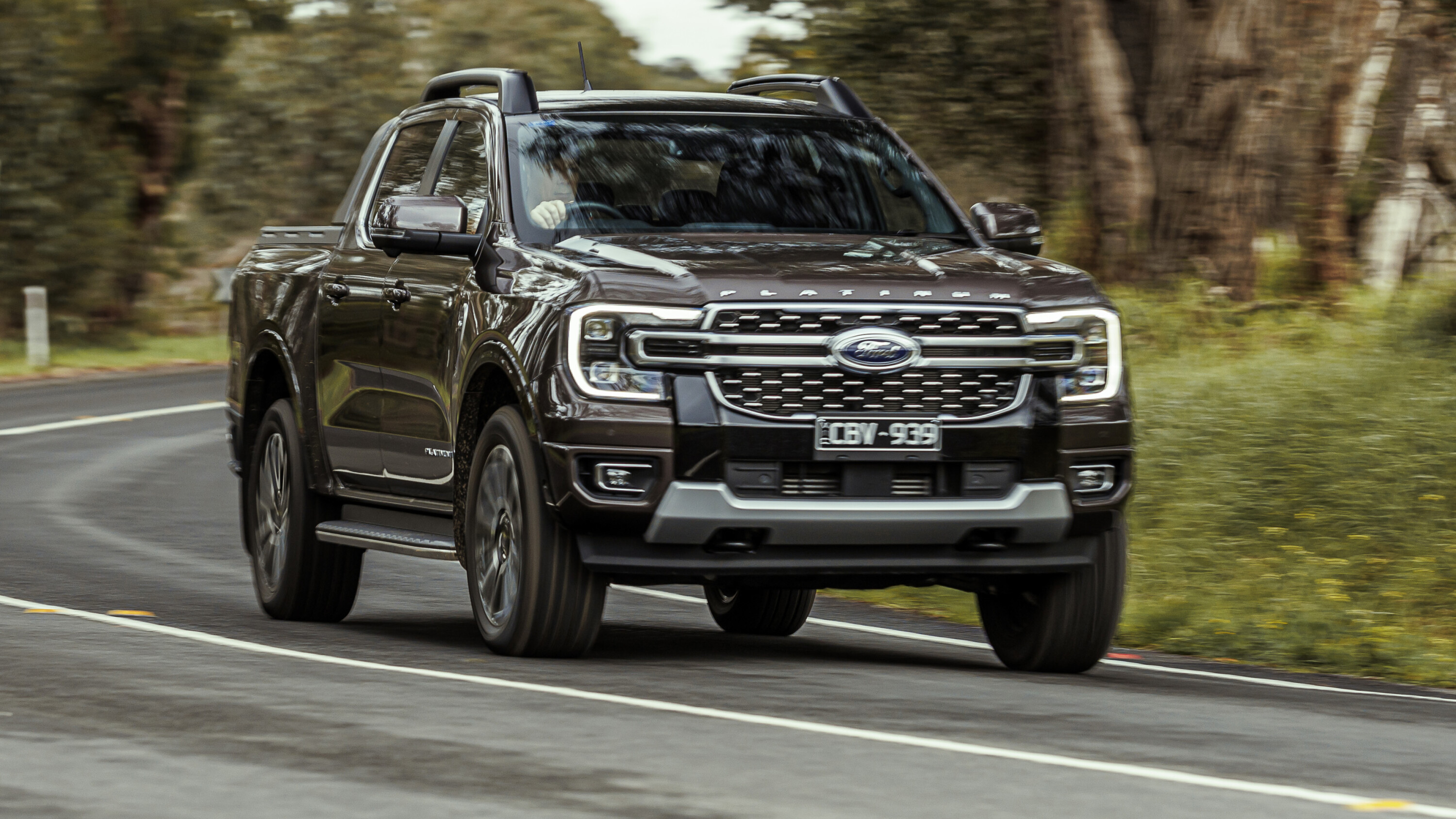
There’s an unexpected suppleness to the Volkswagen’s ride that’s missing from the slightly flintier Ford.
The difference in ride comfort could be due to the fact that the VW’s more expensive monotube dampers are more capable of controlling the greater unsprung masses at play. Whatever the reason, there’s an unexpected suppleness to the Amarok’s ride that’s missing from the slightly flintier Ford.
Otherwise, there’s not much to choose between them, That’s hardly surprising given they share engines, transmissions and basic underpinnings. Neither wants for straight-line grunt.
The 3.0-litre V6’s generous torque (600Nm between 1750 and 2250rpm in both models) combined with a 10-speed automatic transmission means there’s usually a spread of at least three gears where decent acceleration is a given.
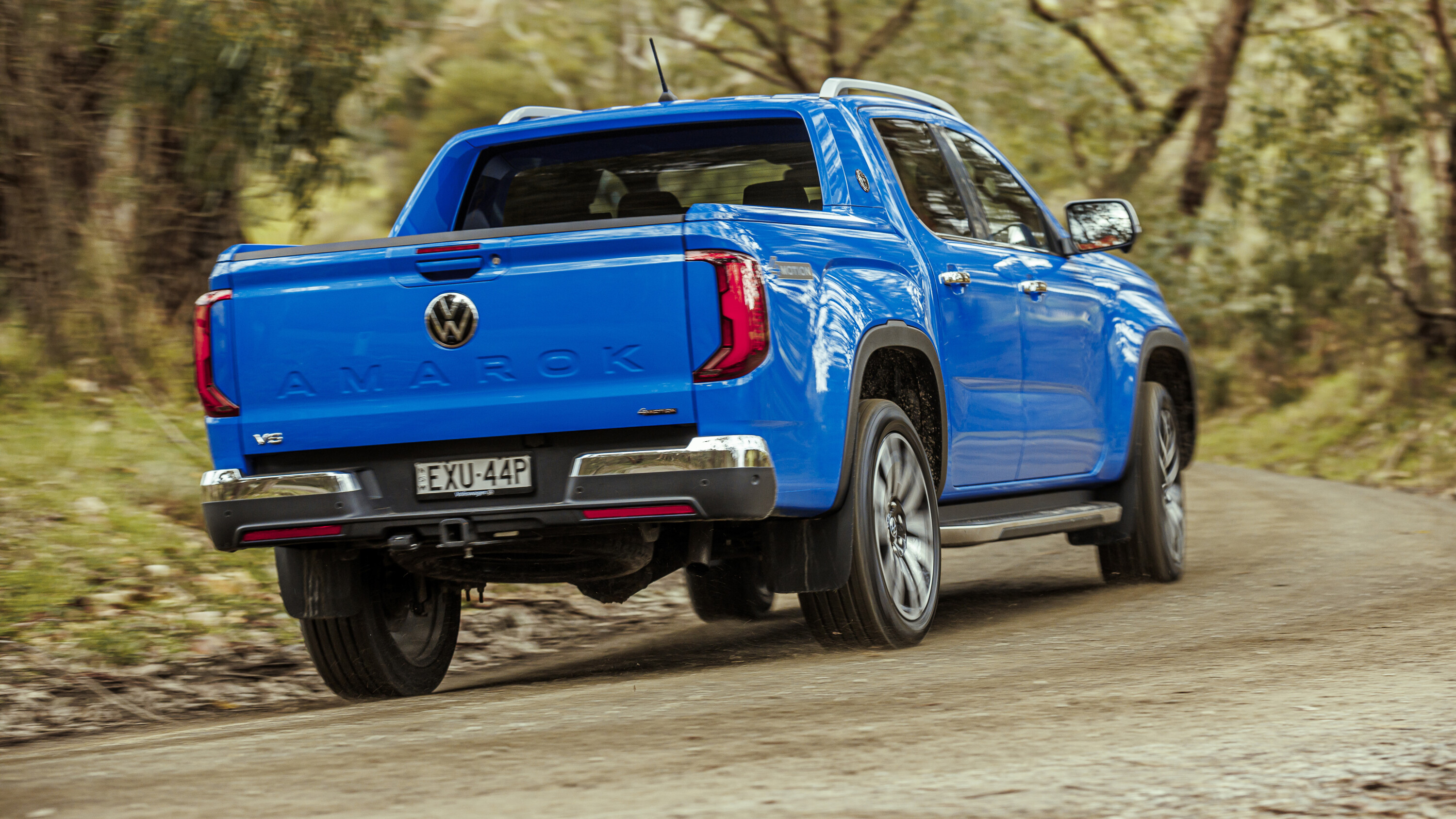
Each vehicle features an 80-litre fuel tank, offering a typical range of 1000km between fills.
The 10R80 transmission used to have a reputation for hunting around for the right gear ratio, but a combination of an updated torque converter design, smarter software and an engine that offers a deeper and broader swell of torque has solved that problem once and for all.
Braking is also not really anything to worry about. The Aventura is equipped with 340x235mm ventilated discs up front and dual-piston calipers, backed up by 330x25mm ventilated discs aft with a single-pot sliding caliper.
The Ranger Platinum’s stoppers are of a similar spec, with marginally larger diameter discs (341mm up front, 332mm at the back).
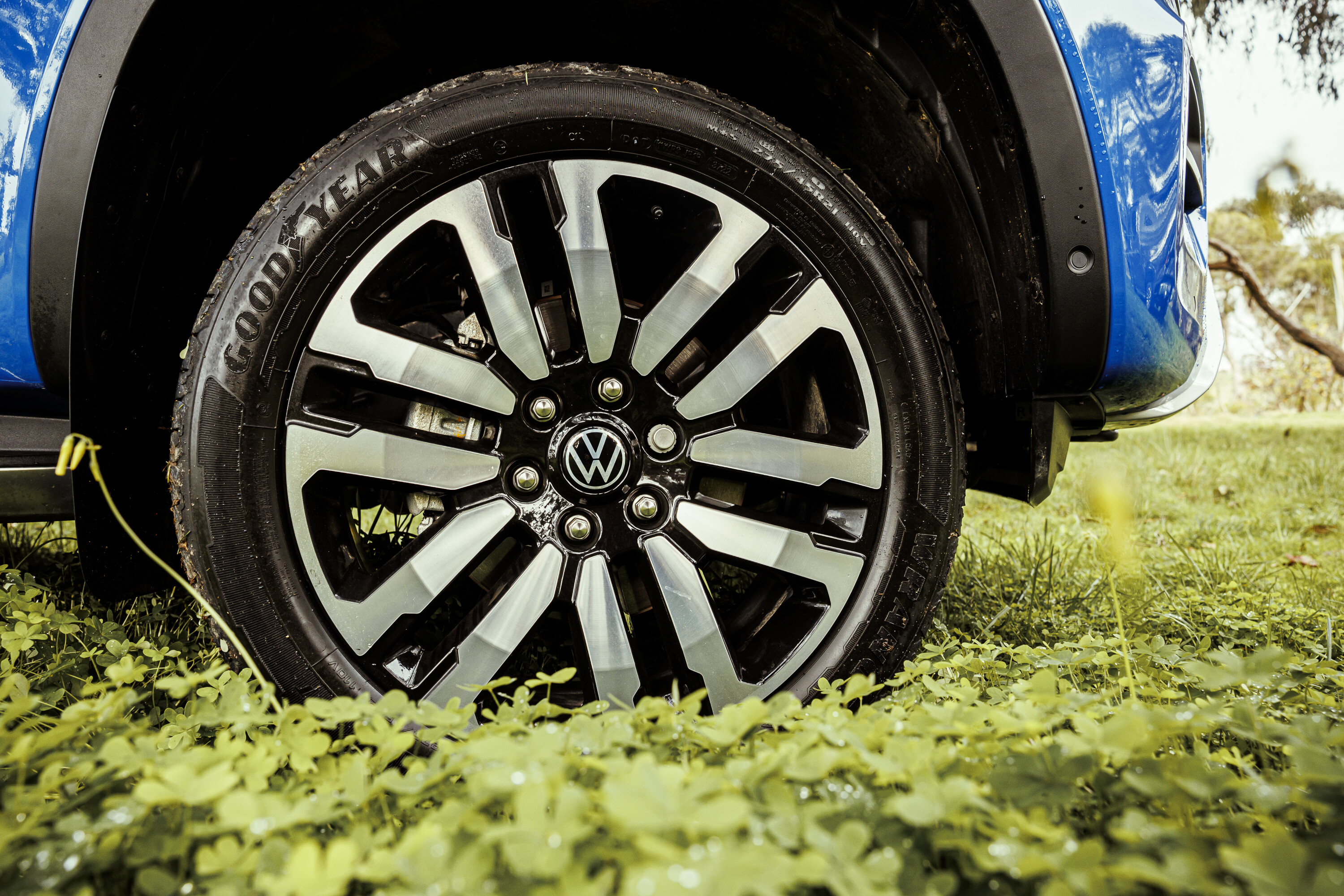
Each vehicle features an 80-litre fuel tank, offering a typical range of 1000km between fills.
Braked towing is rated at 3500kg for both, although both have the worst payload ratings in their respective ranges.
The Ford wields a slight advantage here, netting a 912kg payload versus a mere 858kg for the Volkswagen. The Amarok features a 350kg static roof load, 85kg dynamic roof load and 350kg tow ball weight for towing.
Standard tyre pressure monitoring is a feature that those who air up and down while off-roading will find useful in the Amarok, that’s missing on the Ranger. The Volkswagen features Normal, Eco, Slippery, Mud, Sand/Snow and Towing/Heavy Load modes, broadly mirroring those of the Ford.
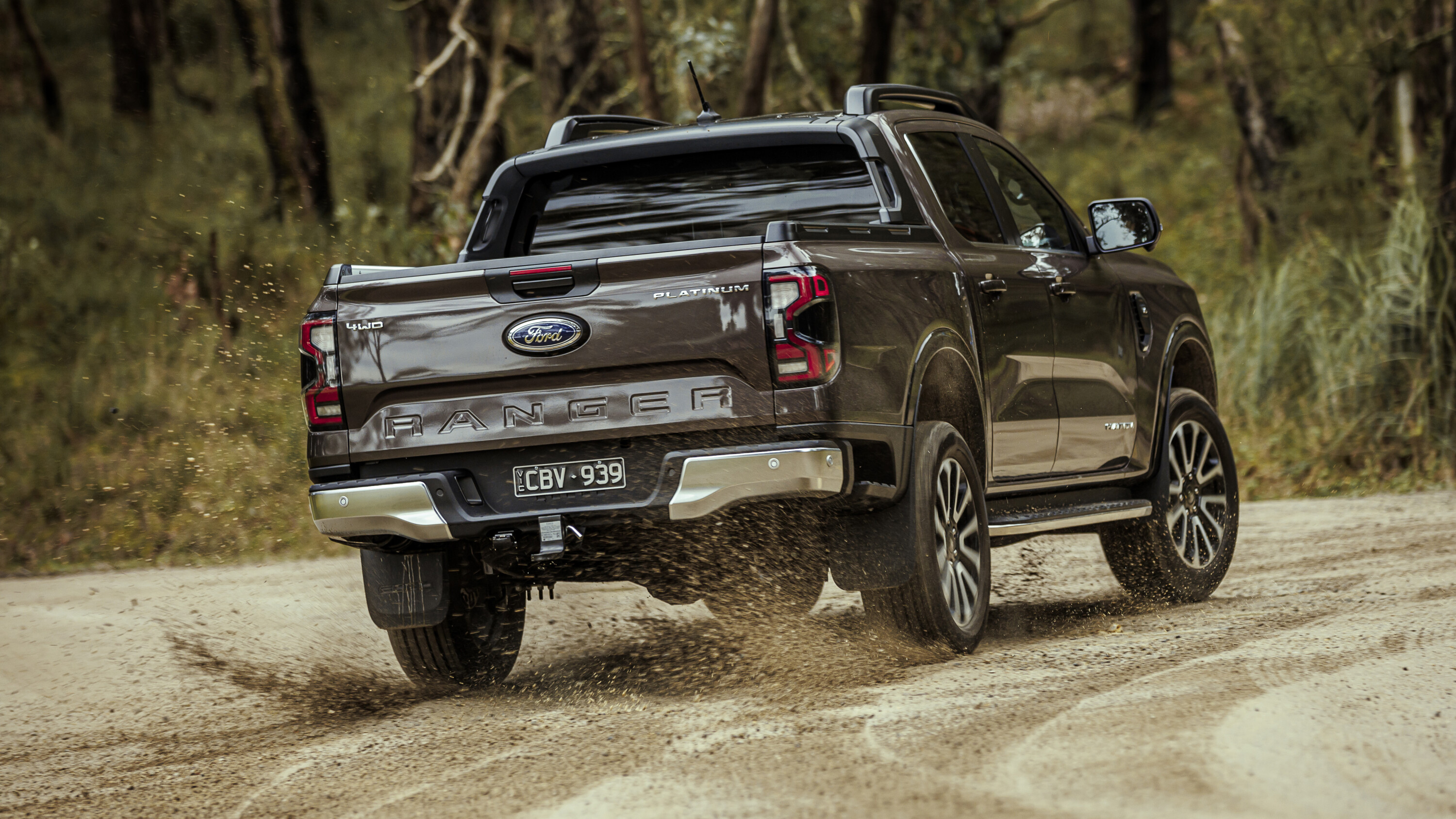
The Amarok’s forward collision alert system seems somewhat neurotic, sounding a loud and urgent beep when it thinks you’re about to rear-end something.
It does this a little too frequently, such as filtering into a slip road away from stationary traffic.
By contrast, Ford’s system seems a good deal more laid-back. Otherwise, the safety systems work well, with both vehicles netting excellent surround-view cameras, well-calibrated adaptive cruise control systems and a five-star ANCAP rating.

Conclusion
Cards on table time. We love the new Ford Ranger here at Wheels. We also admire Ford for really going to town on the new Ranger Platinum.
As a flagship experience; a vehicle that feels considerably more premium than the next model in the range, it’s far more convincing than the Volkswagen Amarok Aventura.
Cue the considerable caveat. It doesn’t ride anything like as well as it ought to. This isn’t something we can easily overlook. On its 20-inch wheels, the Ranger Platinum feels nervous and brittle on our typically pockmarked roads. By contrast, the Amarok’s body control and both primary and secondary ride qualities are far more impressive.
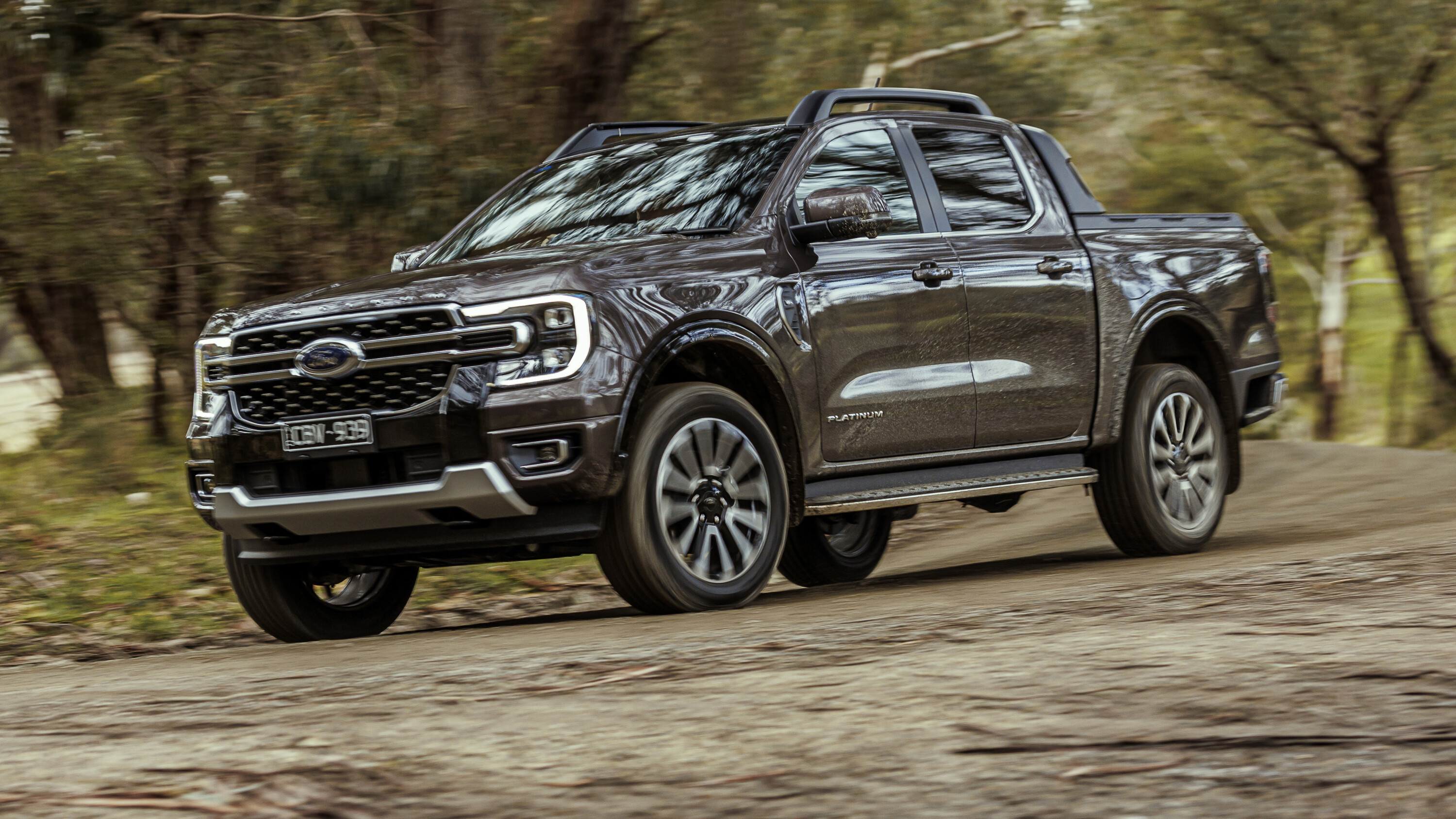
There’s also an ace up the Amarok’s sleeve in the form of the TSI 452 petrol variant, which uses the 2.3-litre EcoBoost engine that you’ve seen in the Ford Mustang and the Ford Focus RS to offer a ute with a very different flavour.
As it stands, the Ranger’s ride quality is a dynamic issue that, personally speaking, would probably be significant enough to direct me from a Ford dealer to a Volkswagen showroom. Your mileage may differ. Ultimately, much of the appeal of these two well-equipped range-toppers is down to their styling, and you’re the best judge of that, not me.
The Volkswagen is $3000 costlier though, and there are several trim and practicality advantages provided by the Ford that some won’t be able to go past.
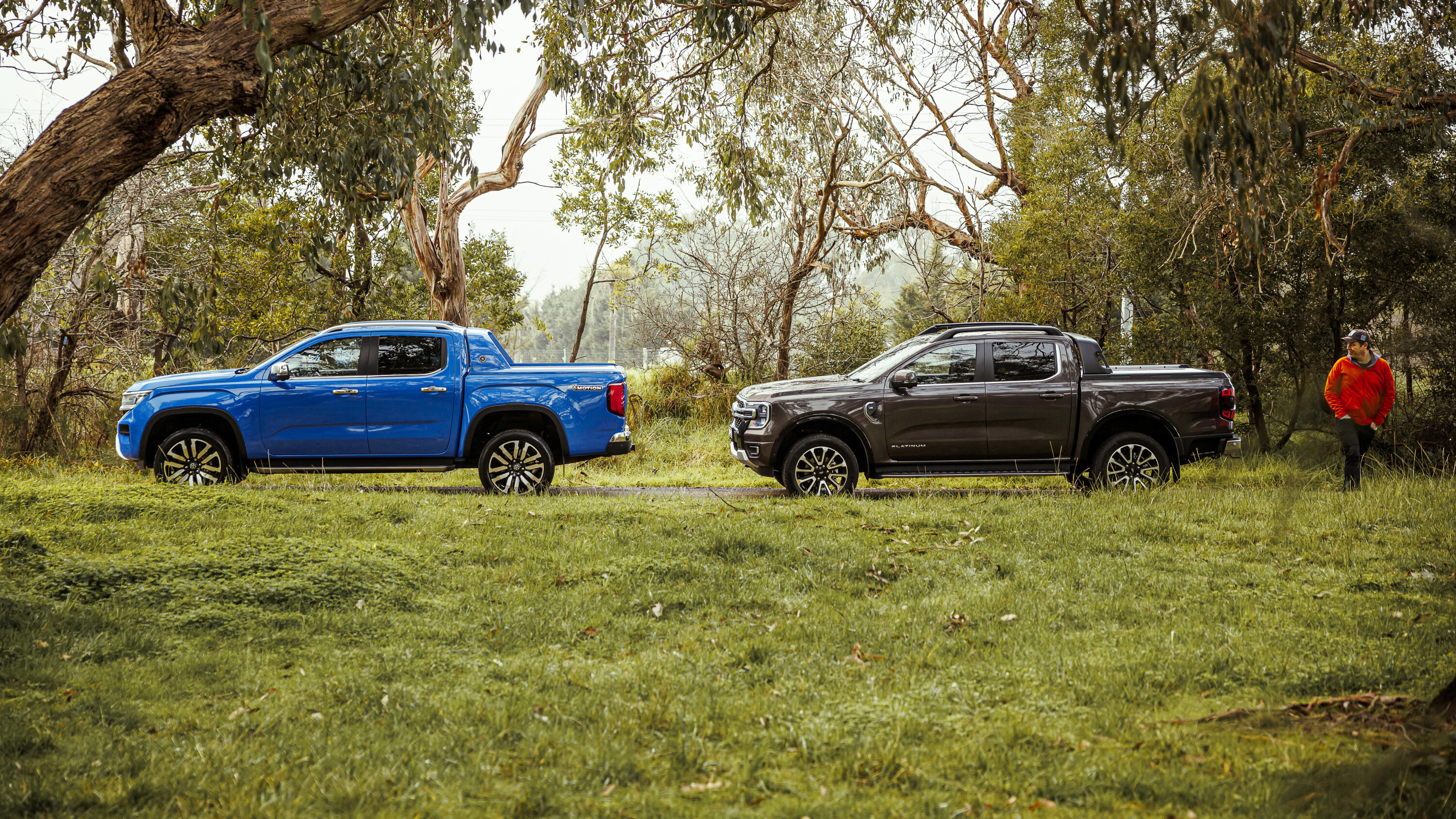
In other words, this is a lineball decision. If the ride quality of the Ranger Platinum is likely to irk you, the decision makes itself.
Likewise, if you want a ute that’s absolutely rammed to the gunwales with gear, the Amarok might be found slightly wanting.
In truth, for most buyers, most of the time, neither of these vehicles represents the sweet spot in the range. If pushed for advice, I’d recommend saving some money and opting for a Ranger or Amarok model that’s more affordable and which better expresses the incredible all-terrain ability that’s locked away in these flagship variants.
SCORING
Ford Ranger Platinum V6: 8.5/10
Things we like
- Generous standard equipment provision
- Looks great
- Engine and drivetrain are ace
Not so much
- Fidgety ride on 20-inch wheels
- You lose a bunch of off-road ability with these tyres
- Doesn’t feel like the range sweet spot
Volkswagen Amarok Aventura TDI 600: 8.5/10
Things we like
- Slick styling
- That great V6 diesel and 10-speed auto
- Better ride quality than the Ford despite being on 21-inch alloys
Not so much
- Costs a fair whack
- Again, you compromise on all-terrain ability with this model
- Misses many of the Ranger’s clever practicality features
| Ford Ranger Platinum | Volkswagen Amarok Aventura | |
|---|---|---|
| Safety, value and features | 8.5 | 8 |
| Comfort and space | 9 | 8.5 |
| Engine and gearbox | 8.5 | 8.5 |
| Ride and handling | 7 | 8 |
| Technology | 9 | 8.5 |
| OVERALL | 8.5 | 8.5 |
2023 Ford Ranger v VW Amarok specs comparison
| 2023 Ford Ranger Platinum V6 | 2023 Volkswagen Amarok Aventura TDI 600 | |
|---|---|---|
| Body | 4-door, 5-seat dual-cab ute | 4-door, 5-seat dual-cab ute |
| Drive | four-wheel (automatic) | four-wheel (automatic) |
| Engine | 3.0-litre V6 turbo-diesel | 3.0-litre V6 turbo-diesel |
| Transmission | 10-speed automatic | 10-speed automatic |
| Power | 184kW @ 3250rpm | 184kW @ 3250rpm |
| Torque | 600Nm @ 1750-2250rpm | 600Nm @ 1750-2250rpm |
| Bore stroke (mm) | 84.0 x 90.0mm | 84.0 x 90.0mm |
| Compression ratio | 16.0:1 | 16.0:1 |
| 0-100km/h | 9.5 sec (estimate) | 9.5 sec (estimate) |
| Fuel consumption | 8.4L/100km (combined) | 8.4L/100km (combined) |
| Weight | 2345kg | 2332kg |
| Suspension | MacPherson strut front/leaf spring rear | MacPherson strut front/leaf spring rear |
| L/W/H | 5370/1918/1884mm | 5350/1910/1886mm |
| Wheelbase | 3270mm | 3270mm |
| Fuel tank | 80 litres | 80 litres |
| Brakes | 341mm ventilated discs, two-piston calipers (f) 332mm ventilated discs, single-piston caliper (r) | 340mm ventilated discs, two-piston calipers (f) 330mm ventilated discs, single-piston caliper (r) |
| Tyres | 255/55 R20 Goodyear Wrangler Territory HT | 275/45 R21 Goodyear Wrangler Territory HT |
| Wheels | 20-inch alloy (full-size spare) | 21-inch alloy (full-size spare) |
| Price | $76,990 + on-road costs | $79,990 + on-road costs |


